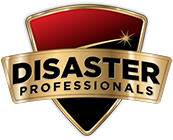The Process of Flood Restoration
Flooding is the most common and devastating type of disaster. While some may say the best option is to attempt cleanup by yourself, DIY flood restoration often ends in more damage to your property simply from inexperience and lack of the correct tools. Hiring a professional flood restoration service will ensure they go through the proper steps of flood cleanup.
Flood Insurance
To avoid mold growth, water-logged items must be dried within 48 hours. After calling a flood damage recovery service, you'll want to start cleanup, salvage, and drying as soon as possible. If you have flood insurance, it's time to get in contact with them to file a flood claim. Take photos to keep inventory and show the adjuster the damage, which they will assess once they arrive. At Disaster Professionals, we work with your insurance to take care of your claims.
Inspection
The first thing your recovery service will do when they arrive at your home is identify and stop the water source if it is still unknown. While they are doing this, they will also address the type water that has flooded your home. There are three types: white, gray, and black. If it is white (meaning clear) water, it means that it is clean and does not present any contamination danger. It possibly came from a broken water line or rain water. However, it can quickly turn to gray water if not cleaned. Gray water is more dangerous than white water. It may contain contaminants such as chemicals or muck that can be harmful to your health. This type of water can come from drains and nearby rivers. It can evolve into black water if not cleaned up within 48 hours. Black water is the most hazardous type of flood water, contaminated from floodwaters and sewage. It can come from a backed up toilet, a river, or a bursted sewage line. Black water contains very harmful contaminants such as mold and bacteria that can cause serious illnesses and diseases and contaminate the surrounding air. If you find black flood water in your home, it is crucial that it be professionally removed and cleaned immediately. After decided the type of flood water in your home, the inspectors will evaluate the extent of your property's damage and remove any furniture.
Extraction
Water extraction removes the majority of the flood water from your home. Large, powerful pumps and vacuum units will work to remove thousands of gallons of water from the flooded areas. Doing this within the first 48 hours will reduce the risk of mold, cut down on drying time, and prevent secondary water damage.
Drying and Dehumidification
Waiting for your home to dry after major flooding can take quite a while, even though it may look relatively dry after extraction. A majority of building supplies like wood and drywall are porous, meaning they soak up and absorb water. This can cause a number of problems, such as warping, swelling, and mold damage. To prevent this, professionals will dehumidify the materials, adjusting temperature and humidity to remove any retained moisture.
Clean Up and Restoration
Areas of your home that have been damaged by flood water will require professional cleaning to sanitize and eliminate any odors. After a thorough cleaning comes the process of returning your home to the state it was in pre-flood. With a skilled team overseeing this restoration, your home will be back in good condition in no time.
Every flood damage case is a little bit different. But no matter the level of damage or restoration time, a solution can be found.
Do you have any questions or concerns? Disaster Professionals offers 24/7 disaster recovery response for everything from flood cleanup to complete flood restoration. We're happy to help!


